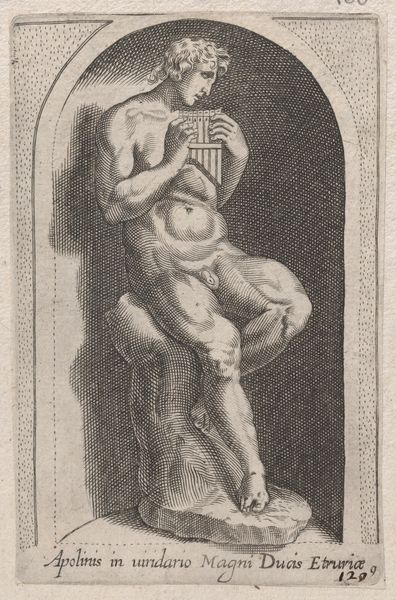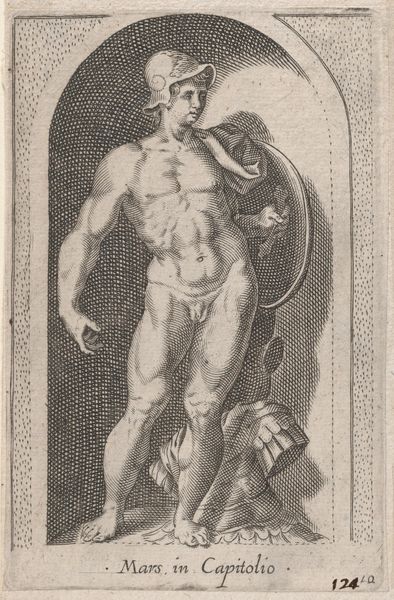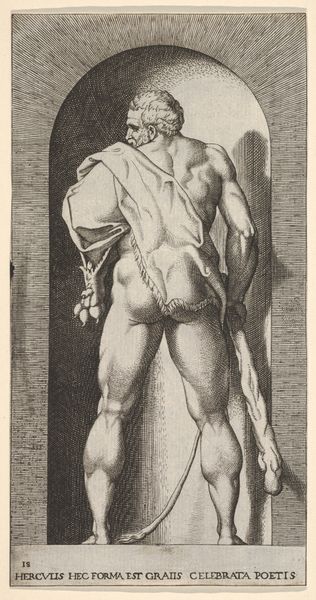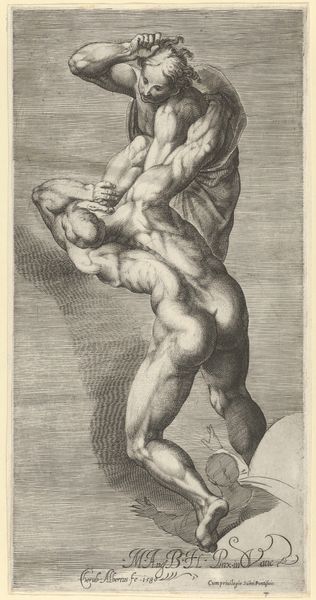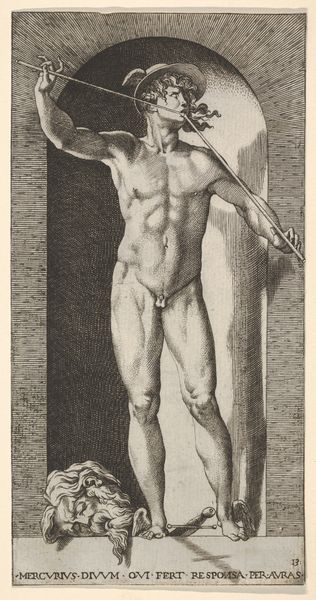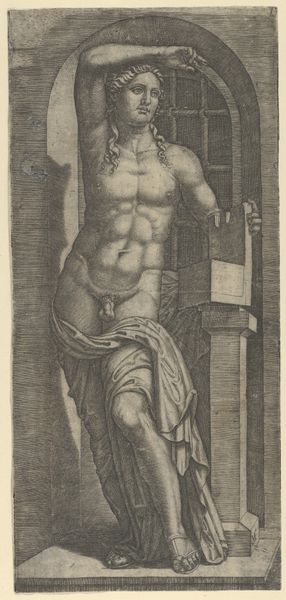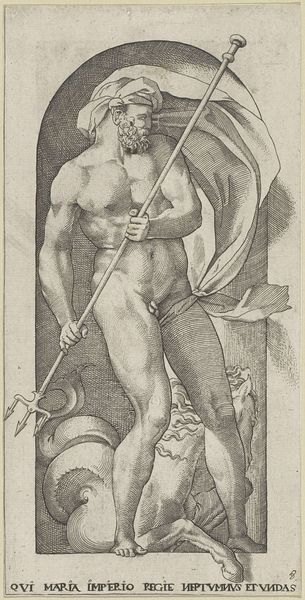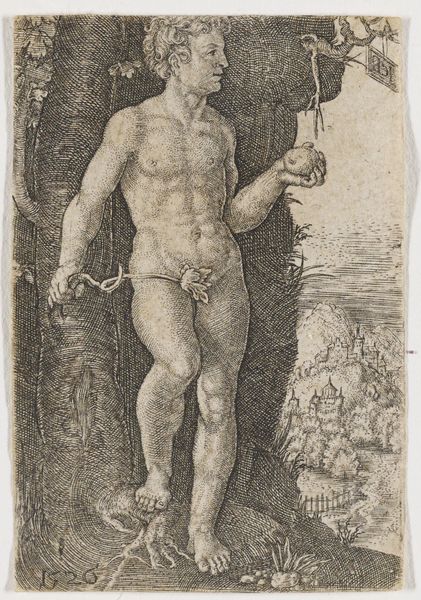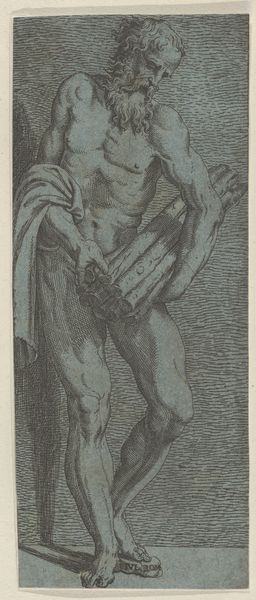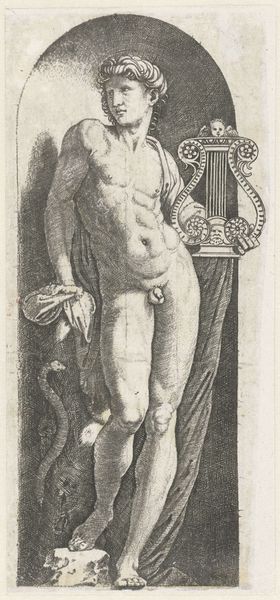
Speculum Romanae Magnificentiae: Comodus (Comodus in aedibus Card. Farnesij) 1530 - 1580
0:00
0:00
drawing, print, engraving
#
drawing
# print
#
mannerism
#
figuration
#
history-painting
#
italian-renaissance
#
nude
#
engraving
Dimensions: sheet: 16 5/8 x 13 1/8 in. (42.3 x 33.3 cm) plate: 4 15/16 x 3 1/8 in. (12.5 x 8 cm)
Copyright: Public Domain
This engraving portrays Commodus, the Roman emperor, and it speaks volumes about the enduring power of symbols across time. The figure of Commodus, in a heroic pose, carries a club that immediately evokes the figure of Hercules, the demigod known for his strength and labors. This reference is not coincidental; Commodus, during his reign, cultivated a cult of personality, identifying himself with Hercules to reinforce his image as a powerful and divine ruler. The club, therefore, acts as a signifier of power, heroism, and divine association, linking Commodus to a figure deeply embedded in the Roman psyche. Now, consider how the figure of Hercules, the club-bearer, appears in other contexts: from ancient Greek pottery to Renaissance sculptures. The symbol evolves, yet the underlying themes of strength, struggle, and triumph remain constant, resonating with viewers on a subconscious level. This echoes the non-linear, cyclical progression of symbols, as they resurface, evolve, and take on new meanings throughout history.
Comments
No comments
Be the first to comment and join the conversation on the ultimate creative platform.
